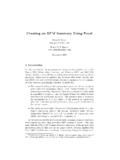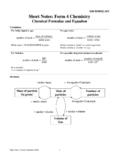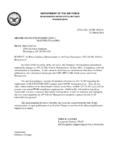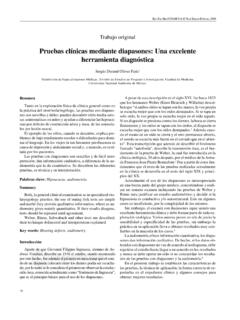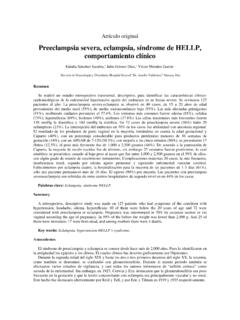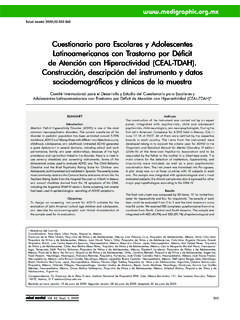Transcription of Understanding Autopilot Modes - HeliOffshore
1 Understanding Autopilot MODESIan Scott FRAeSHead of Aircraft Services Shell Upstream ExplorationUNDERSTANDING Autopilot MODESThe issue: Typically not Understanding the logic a particular mode employs, using an inappropriate mode for the phase of flight, simultaneous manipulation of the controls whilst a mode is engaged, or not using Modes that might assist workload and enhance safety. Understanding Autopilot MODESBack to basics: Ab-Initio training and a fundamental Understanding of primary effects of controls Pitch determines Airspeed primarily, Vertical speed secondarily Collective determines Vertical speed primarily, Airspeed secondarily Trimmed, steady state conditions Trim release and trim adjustment not understood: Evident in practice: Former GA pilots flying AS332L in SAS mode Flying the B212 with trim off BACK TO BASICSQ uestion EC135/A109 Force trim correct usageHi ppruners,I ve been having a lot of discussion lately with colleagues as to what is the proper way of using the force trim in our machines.
2 Several ways of doing it have arised, and it got me worried, since there are very different between know the use of the trim button on the uh-1 helicopter but i just get confused why i heard that i have to "press the trim release and fly the aircraft to a new altitude and then release, the new altitude will then be held."BACK TO BASICS WHAT S THE CONNECTION? As previously mentioned in section , it is important that all control pressures be trimmed off, in a steady-state flight, before engaging GA mode. Otherwise, the helicopter may deviate significantly from the desired flight profile. This is due to the fact that the trim actuators may not be able to adequately compensate for changes in aircraft attitude. Engaging Modes when not trimmedBACK TO BASICS WHAT S THE CONNECTION?Engaging Modes , then interfering with controlsMOVING ON FROM BASICS TO THE Damper - SASC ontrol Augmentation - SCASA ttitude Hold - ASEA utopilotOperational AutopilotInner LoopOuter LoopAFCS HIERARCHY LOOPA utopilotServosHelicopter responseAFCS Inner LoopAFCS Outer LoopFast acting, low authoritySlow acting, high authorityAFCS HIERARCHY LOOK FAMILIAR?
3 Understanding THE MODE LOGIC RFM/FCOM CONTENTC ompared to this:If within parameters, the CFD will capture the localizer and track it inbound. If not within parameters, the localizer will arm, the pilot should use the heading mode to fly the aircraft to a proper intercept heading and the CFD will automatically capture once within THE MODE LOGIC RFM/FCOM CONTENT Minimises confusion: Why isn t it engaging? Why is it doing that? Why has it dropped out? Aids monitoring/avoids surprise: Which axis to monitor What to expect with mode changes When approaching envelope limitsUNDERSTANDING THE MODE LOGIC - DISPLAYSFMA is the visual conversation from the Autopilot to the crew use it! Understanding THE MODE LOGIC - DISPLAYSFMA is the visual conversation from the Autopilot to the crew use it! What the Autopilot is doing now What the Autopilot will do nextAUTOPILOT Modes - NOT JUST THE AFCSAUTOPILOT Modes - NOT JUST THE AFCSFly over, or fly by?
4 OPERATIONAL USE SOPs, SOPs, ! Based on Golden Rules of Automation Based on specifics of the aircraft Modes and logic Based on mission profile/operating environment Consistent in their logic Indoctrination in Operator Conversion phase (dry) simulator hours Monitored in operations: LOSA FDM Peers Assessed in OPCs (regulator has to buy into the concepts)STAKEHOLDERSF light CrewInitial Flight SchoolTRTO (ATO)OEMR egulatorOperatorFlight OpsPersonal responsibility: Not spoon fed Seek Information Question Understanding Accountable for safetySUMMARY Understanding Autopilot Modes covers a spectrum of concepts: Basic aircraft handling Basic AFCS systems without coupling inner and outer loop concepts How the OEM determines envelope and operating logic How the OEM describes the AP Modes in RFM/FCOM/FCTM How the OEM displays the operating Modes How other systems ( FMS) interact with AP How and when to use Modes SOPs Taking personal responsibility for Understanding generally the pilot(s) are the first to the scene of an accident!
